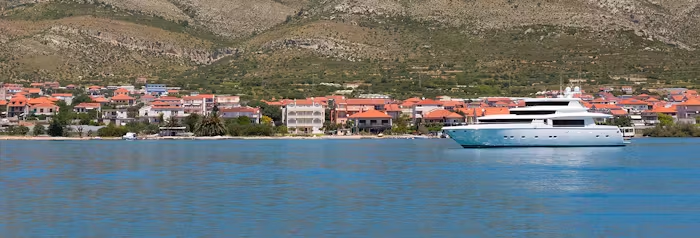
BOATERS BLOG
The 2015 Atlantic hurricane season may be one of the least active in decades, according to an initial forecast issued Thursday by Colorado State University.
The early outlook released April 9 calls for seven named storms, including three hurricanes, one of which is predicted to attain major hurricane status (Category 3 or stronger on the Saffir-Simpson Hurricane Wind Scale).
This is well below the 30-year average of 12 named storms, six hurricanes, and three major hurricanes.
The outlook, headed by Dr. Phil Klotzbach in consultation with long-time hurricane expert Dr. William Gray, is based on a combination of 29 years of statistical predictors, combined with analog seasons exhibiting similar features of sea-level pressure and sea-surface temperatures in the Atlantic and eastern Pacific Oceans.
Here are four questions about this outlook and what it means for you.
2014 Atlantic Hurricane Season Tracks
Tracks of all Atlantic tropical cyclones attaining at least tropical storm strength in the 2014 hurricane season.
Q: Does this mean a less destructive season?
There is no strong correlation between the number of storms or hurricanes and U.S. landfalls in any given season.
“It is important to note that our – The Weather Channel – forecasts are for the total number of storms that may occur anywhere within the Atlantic Ocean, and do not attempt to predict the number of storms that will make landfall in the U.S.,” said Dr. Peter Neilley, vice president of Global Forecasting Services at WSI.
The 2014 season featured the fewest number of named storms in 17 years (eight storms), but also featured the strongest landfalling hurricane in the mainland U.S. in six years (Hurricane Arthur on the Outer Banks), and featured two back-to-back hurricane hits on the tiny archipelago of Bermuda (Fay, then Gonzalo).
Furthermore, six of those eight storms became hurricanes, and Gonzalo was the strongest Atlantic hurricane since Igor in 2010.
In 1983, there were only four named storms, but one of them was Alicia, a Category 3 hurricane which clobbered the Houston-Galveston area.
The 2010 season featured 12 hurricanes and 19 named storms, which tied 1995 for the third most named storms in any Atlantic season, at the time. But not a single hurricane, and only one tropical storm, made landfall in the U.S during that active season.
In other words, a season can deliver many storms, but have little impact, or deliver few storms and have one or more hitting the U.S. coast with major impact.
Therefore, it’s important to be prepared for hurricanes and tropical storms every year, regardless of seasonal forecasts.
Potential impact of El Nino on 2015 Atlantic hurricane season.
Q: Will El Nino play a role?
El Nino was first officially declared by NOAA as winter wound down. As of this early April forecast, El Nino, a periodic warming of the equatorial Pacific waters, has been given a 60 percent chance of persisting into the fall, according to NOAA’s Climate Prediction Center.
“Our best estimate is that we will likely have at least a moderate strength El Nino even during the peak of the Atlantic hurricane season,” said Klotzbach and Gray in the hurricane season outlook.
There is a body of scientific evidence linking the occurrence of El Nino with increased wind shear in the tropical Atlantic Basin, which is one factor, along with dry air, that limits the development and strengthening of tropical cyclones.
However, exactly where the warming of the equatorial Pacific waters takes place and the magnitude of that warming plays at least a partial role in the number of Atlantic named storms.
– Warming in the eastern equatorial Pacific: lower number of Atlantic tropical cyclones
– Warming in the central equatorial Pacific: higher number of Atlantic tropical cyclones
Klotzbach and Gray found five other hurricane seasons with comparable Atlantic and Pacific sea-surface temperatures both in February-March, as well as what is forecast for August-October: 1957, 1987, 1991, 1993 and 2014. Those years averaged eight named storms, four hurricanes, and 1-2 major hurricanes.
Despite the low numbers in those years, in addition to 2014’s Hurricane Arthur, there were two other historic hurricanes during those seasons:
– Hurricane Bob (1991): One of the costliest and most intense New England hurricanes on record ($1.5 billion damage; 17 killed; 5-8 foot storm surge in Rhode Island; waves battered south coasts of Nantucket and Martha’s Vineyard)
– Hurricane Audrey (1957): Only Category 4 June Atlantic hurricane on record; Seventh deadliest Atlantic hurricane with at least 416 killed.
In short, the exact role El Niño may play in the 2015 season remains uncertain.
Sea-surface temperature anomalies in the Atlantic Basin in late March 2015 compared to 1980-2010 average. Blue/purple colors denote cooler than average SSTs. Yellow/orange/red colors denote warmer than average SSTs. (Klotzbach and Gray April 2015 hurricane season forecast)
Q: Any other factors in play?
“As was the case in 2014, significant anomalous cooling occurred across the tropical and subtropical Atlantic during the winter of 2014-2015,” said Klotzbach and Gray.
Looking at the Atlantic Basin as a whole as of late March 2015, warmer sea-surface temperatures (hereafter, SSTs) were in place in the western Atlantic Ocean and Caribbean Sea but generally cooler-than-average SSTs dominated in the eastern Atlantic Ocean from the western African coast to about halfway to the Windward Islands.
All other factors – such as the amount of wind shear and dry air aloft – being equal, warmer waters offer more heat to fuel the tropical cyclone.
It is important to note, however, that a large majority of the destructive hurricanes during the record-setting 2005 hurricane season developed in the western Atlantic Basin.
“The big question marks with this season’s predictions are how strong El Nino is going to be, as well as if tropical and North Atlantic sea-surface temperature anomalies remain as cool as they are now,” said Klotzbach and Gray.

